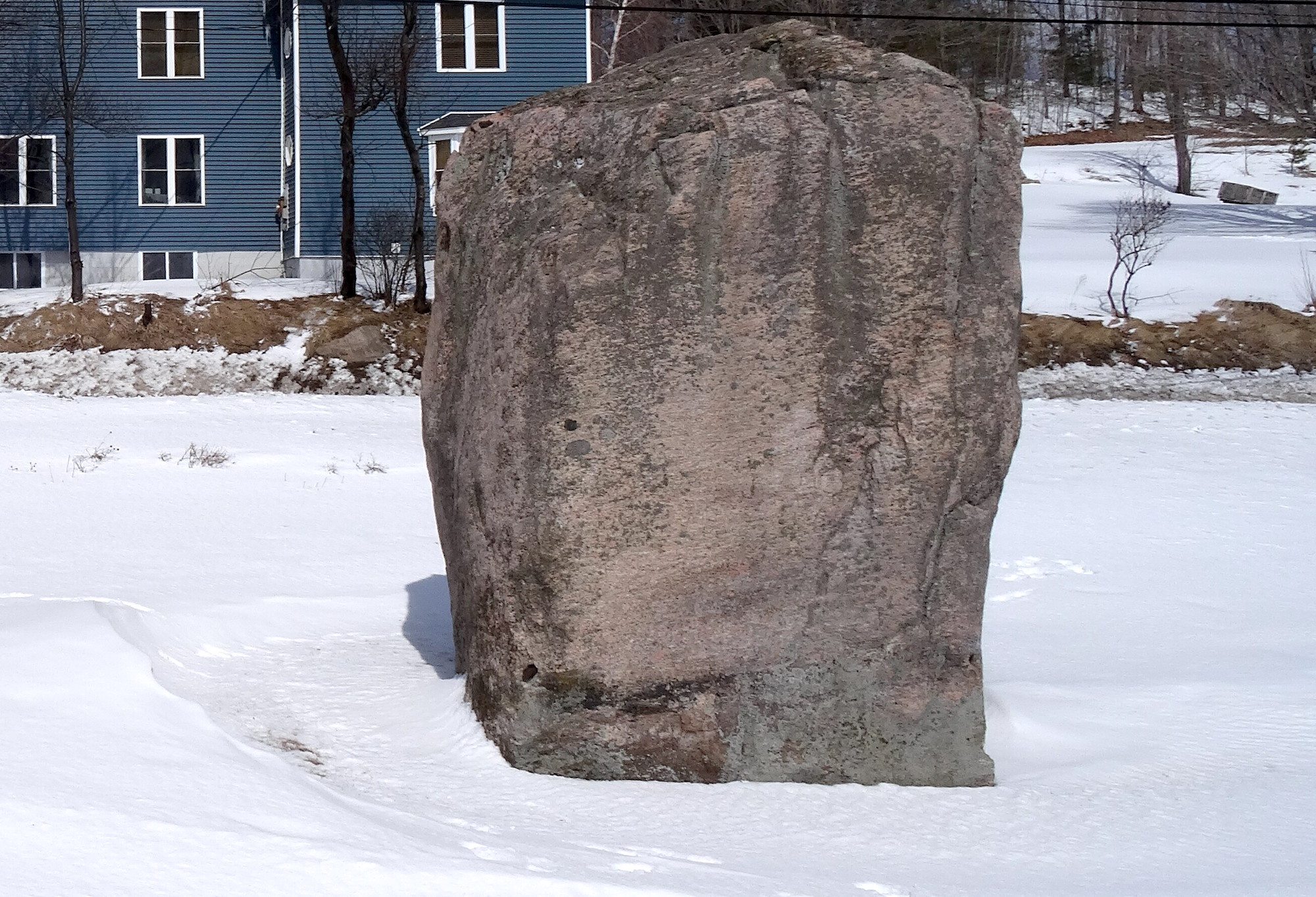
The Sunday Rock was moved to its original location in South Colton, New York, in 1958. Photo by Chann94501 via Wikipedia
Charles Kader, a member of the St. Regis Mohawk Tribe, reflects on the mystery of Turtle Island:
The autumn morning frost clung to the edge of the glacial till boulder, in the shadows of the highway. Nature and the nurtured, side by side in the old South Woods of the Adirondack mountain range, or what was once known as the edge of humanity. Beyond that point it was once often said frightfully, there were no more Sundays. Known regionally as the “Sunday Rock,” the boulder lies astride State Highway 56 in the Town of Colton, New York, located in St. Lawrence County. It is a veritable stone’s throw from one of the original pre-historical Indian trails into the modern Adirondack Forest Preserve. The hunting grounds at the northern Mohawk Territory of Akwesasne would have been accessible from this general area. Such is the symbolism for the fear of the unknown coming into play in this case of Sunday Rock. And who was conjuring it, at any given time. It is not a far-flung idea to imagine the European settlers, having made it this far inland, tapping deeper and deeper into Indian trading networks. Like any invading army, the farther away from supply points creates a greater need to live upon the land, by those most forward troops. Their sense of capital gain was only tempered by the terrain features that reminded these scouts truly what Indian Country meant; something out of reach. Possibly it was a step too far for many.Get the Story:
Charles Kader: The Sunday Rock and the End of the Known World (Indian Country Today 10/25)
Join the Conversation